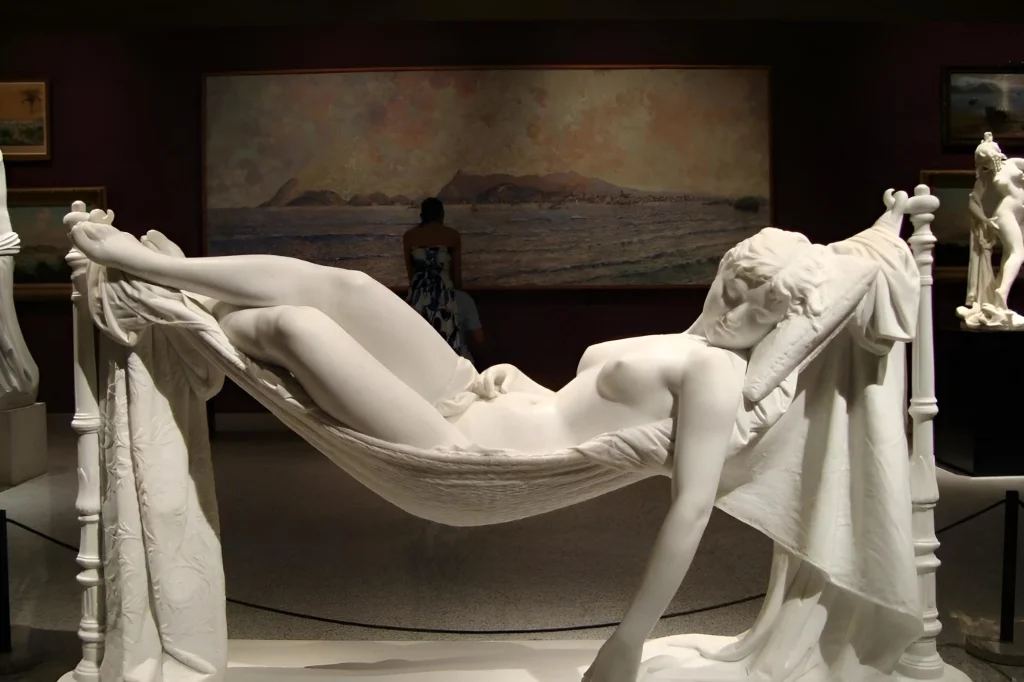If an artist has created even one extraordinary work, they have already secured their place in history. This certainly applies to Antonio Frilli. He was, after all, a sculptor—a proficient one, well-versed in nature and possessing artistic technique. However, Frilli was never audacious, and his compositions were not complex enough to qualify as the epitome of neoclassical expression, like those of Canova, for example.

Frilli lacked the virtuosity of the great masters, and his works suffered from a pale naturalism of forms. He did not emphasize details and other nuances that distinguish well-executed sculpture from a masterpiece.
Yet, he possessed something that not only stood out in his body of work but was also unique for its time—”Nude Woman Reclining in a Hammock,” a marble sculpture from around 1890. There is actually no record of sculptures where the model casually let her arm dangle from a hammock; it’s a bold move, especially considering the period’s construction challenges.
The composition is innovative, but it seems Frilli, even here, confined himself to the “cage” of neoclassical style. In 1904, two years after the master’s death, his son Umberto exhibited this white Carrara marble sculpture at the St. Louis World’s Fair in Missouri, where it received the Grand Prize and 6 gold medals. Currently, it is displayed at the Palazzo Pitti in Florence, Italy.
And now, a bit about my perspective: Frilli’s “Sweet Dreams” challenges the conventions of its time, breaking free from the constraints of traditional neoclassicism. While Frilli may not have reached the technical heights of some renowned sculptors, the audacity displayed in this composition marks it as a noteworthy departure from the norms of the era.